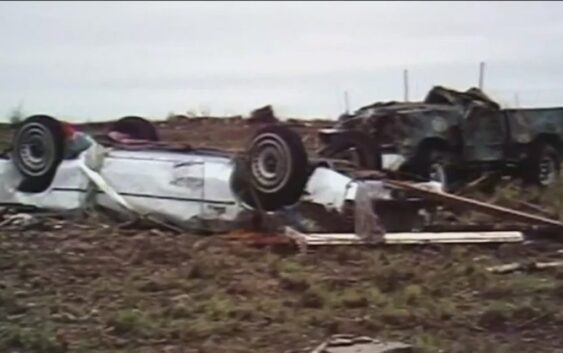- Raleigh rethinks how to grow as flooding, heat and traffic worsen
- New legislative panels will investigate ‘facts and circumstances’ of deadly Central Texas floods
- Heavy rain floods downtown Whiteville forcing local businesses to deal with damage again
- New legislative panels will investigate “facts and circumstances” of deadly Central Texas floods
- Springfield Middle School fully reopens next week, a year after devastating EF3 tornado
The night that one-fifth of the population of a Texas town died in a tornado

Some call it “the forgotten storm” – the night in 1987 when a tornado devastated the West Texas town of Saragosa.
AUSTIN, Texas — The Davis mountains of West Texas are known for their stark and pristine beauty, and for a long time, the mountains were believed to keep the small communities in their shadow safe from tornadoes.
But just 20 miles from the mountains, nothing could be done to protect the small community of Saragosa from disaster.
The evening the tornado struck on a warm May night in 1987, 80 people from the town’s population of about 180 were attending a preschool graduation at the local community center.
The building took a direct hit from an F4 tornado.
Even though the people at the graduation took cover inside the building moments before the tornado hit, 22 died and 60 others were injured. A few blocks away, eight more people died.
That day, the Saragosa Tornado became one of the deadliest in Texas history.
The area had been under a thunderstorm watch all day. Twenty minutes before the twister struck, the weather service issued a tornado warning.
And even though that warning was broadcast by radio and TV stations across West Texas, many of the residents didn’t hear it, since most listened to radio stations from Mexico which hadn’t broadcast the warning.
A few years ago, KWES, revisited Saragosa. They reported that the community center had been rebuilt and was strong enough to withstand an F4 tornado.
Saragosa still bares the physical and emotional scars of that night, which can be seen in empty concrete foundations and in the headstones of people buried in the town cemetery, many of whom bear the day of death as May 22, 1987 – the date Saragosa bore the wrath of nature’s fury.